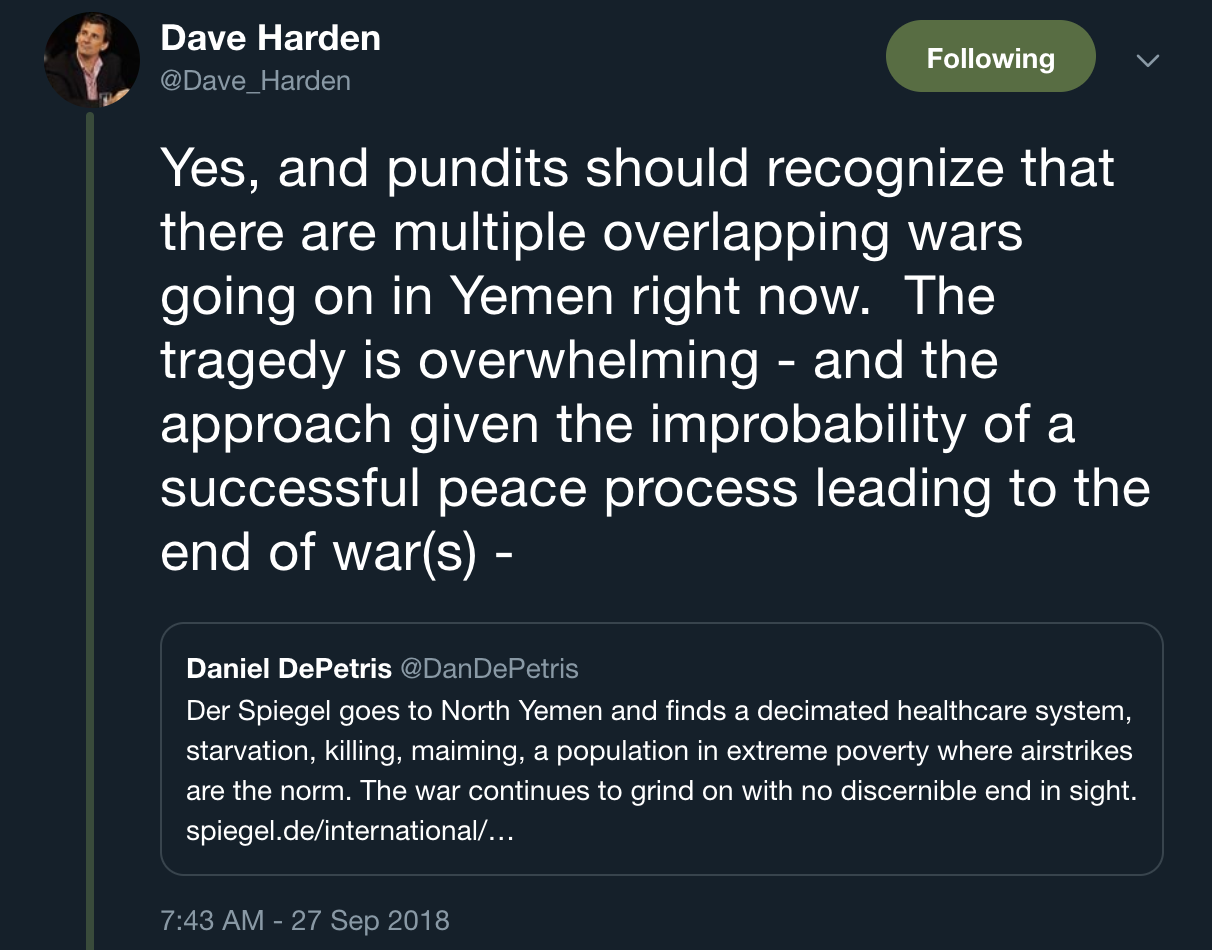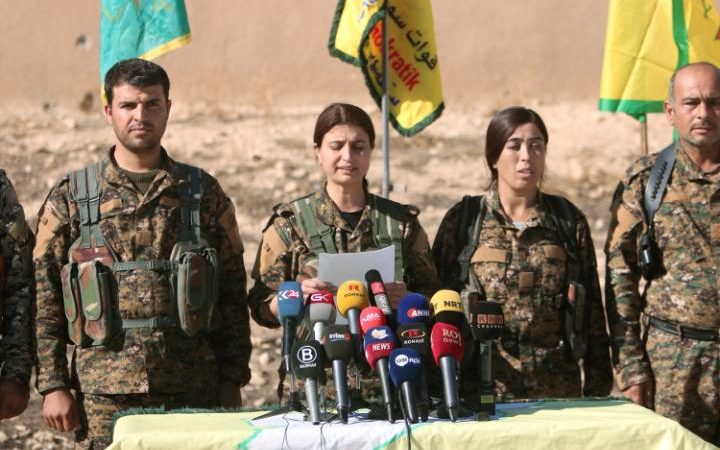For the last 14 years, the war in Yemen has taken a brutal toll on the innocent population of one of the world’s poorest countries. Though an extension of long simmering tribal conflicts, the war is in some ways a proxy battle between the Iranian-sponsored Houthis and the Saudi-led Coalition of Sunni Arab states. Backed by American weaponry, intelligence, logistics, and political top cover, the Coalition has almost managed to completely surround the last Houthi stronghold in Sanaa, Yemen’s traditional capital. In what amounts to an operational siege of a fortified enclave, the port of Hudaydah is both the key to victory and the final lifeline for millions of Yemenis caught in the middle and slowly starving to death. Despite the emergence of dramatic images of malnourished children in the final stages of starvation, Yemen has raised very little public attention from the Pentagon…until last week.

In a stunning reversal, the Secretaries of Defense and State announced that the United States would demand a ceasefire in Yemen. Communicated simultaneously, the demand came with an aggressive 30-day timeline. With Coalition forces massing for a final assault on Hudaydah, the timing of the announcement comes on the eve of what looks to be an irrevocable turning point in Washington’s favor. Some believe the curious timing makes sense given the dire humanitarian situation, but others point out that none of the warring factions are anywhere close to a negotiable position. A peace process, they suggest, is not only doomed at this point, but will likely prolong, and possibly magnify, the escalating humanitarian catastrophe. The opposing positions illustrate the intensity of the ethical dilemma Yemen presents to the world; is it better to stop the fighting or just get it over with?
Tragic Yemen
Experts among the humanitarian community say famine is a uniquely avoidable disaster but, once triggered, it cannot be easily reversed. Suffering from years of privation, currency collapse, and the world’s worst Cholera epidemic, Yemen rides the famine tripwire in every measurable way. Jeremy Konyndyk, recent Director of the Office of U.S. Foreign Disaster Assistance, believes an assault on Hudaydah will plunge the fragile region into the abyss, if it’s not already there. With some justification, he thinks this realization may be the basis for Washington’s policy shift in favor of ceasefire.

It is very easy to see the moral value of stopping the fighting to save the starving children of Yemen. However, the effectiveness of that course is as ambiguous as the political and military vagaries of the war in Yemen itself. Dave Harden, a respected diplomat that recently led US efforts to alleviate the humanitarian crisis in Yemen (and briefly Konyndyk’s boss) takes a dim view of the prospects for peace.

If Mr. Harden is correct, which seems likely, it is doubtful a ceasefire will last very long or have a measurable positive impact on the conditions that lead to famine. Worse, a respite could breathe new life into a failing Houthi defense and crystallize the war into years of intractable stalemate. The resultant mortality of this outcome will eclipse anything Yemen is likely to suffer if Houthi resistance collapses quickly.
Both Sides
Hudaydah and the spiraling famine in North Yemen present a dilemma in the truest sense. Though it is impossible to calculate just how much good can come from a ceasefire, it is also impossible to know how quickly and effectively the fall of Hudaydah will put an end to the war. The answer will be lost in complex analysis of relative combat power, skill of the commanders, tactical geography, and the unknowable will to win inherent in the opposing forces. There is simply no way to determine which is the ethically superior option from the purely utilitarian standpoint of: what is the most good for the most people?
Rather than making an ethical choice, the United States is shrewdly playing both sides. Calling for a ceasefire widely expected to fail makes it easier to blame one’s opponent for the disappointing result. Though this sounds intensely cynical, it can have the practical outcome of weakening Houthi/Iranian resolve, eroding international support, and may increase their need to make concessions. Giving the Coalition thirty days to implement it, however, encourages an attempt to settle the matter. Though calling for a ceasefire is probably the only politically acceptable option in this gamble, with Coalition troops already advancing into the outskirts of the city, the Hudaydah trap has been sprung, and there is no going back. History will balance the intensity of resultant suffering against the durability and justice — if any — of the political outcome.

Lino Miani is a retired US Army Special Forces officer, author of The Sulu Arms Market, and CEO of Navisio Global LLC.
For additional information concerning the war in Yemen please reference the following articles:
“A hint of hope for a ceasefire in Yemen.”
“Ali Abdullah Saleh’s death will shake up the war in Yemen?”





 Chris Golightly is an Independent Consulting Engineer specializing in offshore renewable energy, based in Brussels. Prior to 2010 he worked in the Oil & Gas industry.
Chris Golightly is an Independent Consulting Engineer specializing in offshore renewable energy, based in Brussels. Prior to 2010 he worked in the Oil & Gas industry.

